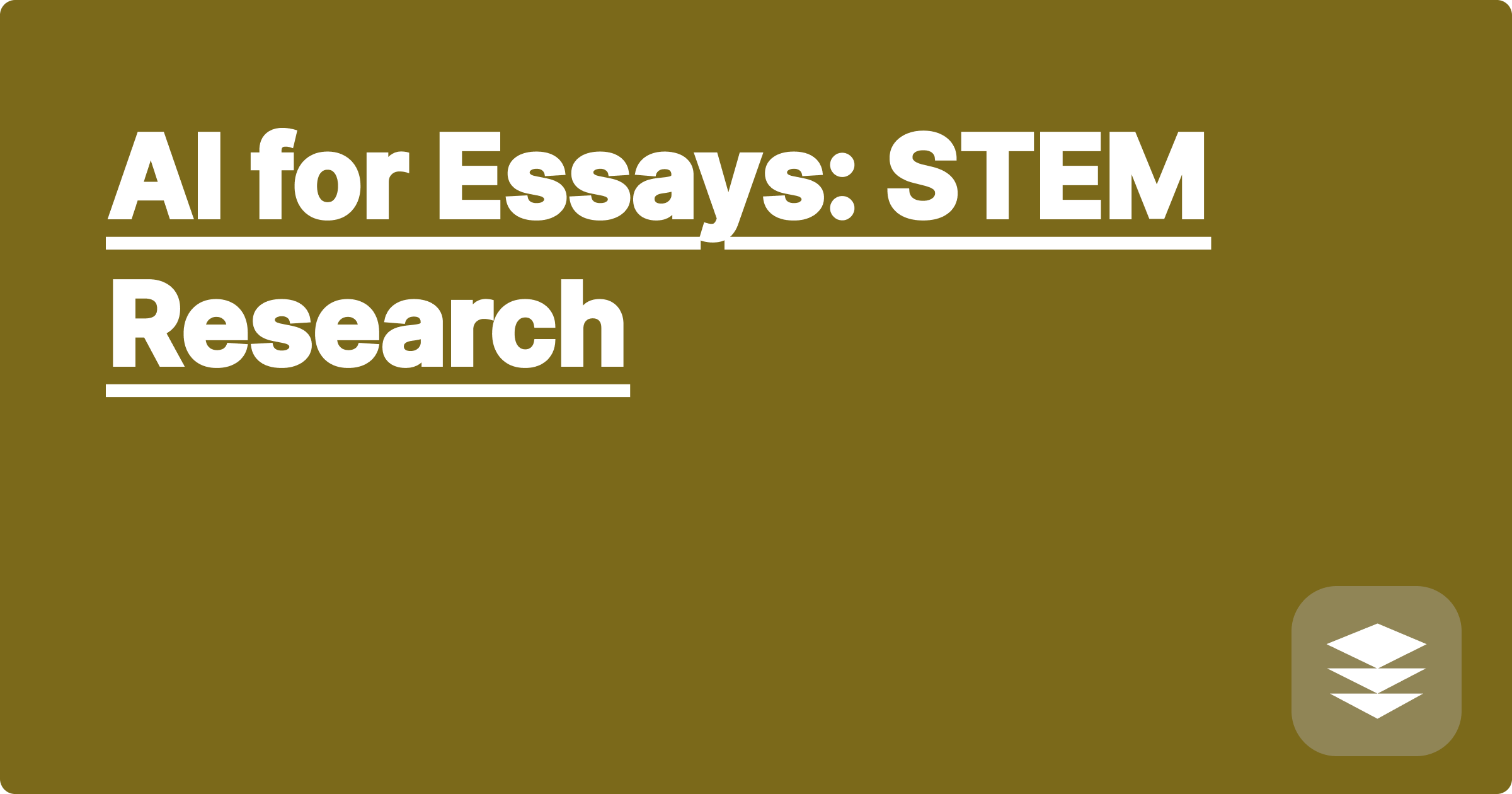
The sheer volume of information in STEM fields presents a significant challenge for students and researchers. Staying updated with the latest discoveries, synthesizing complex concepts, and effectively communicating research findings can be overwhelming. Artificial intelligence offers a powerful set of tools to navigate this information overload and enhance productivity in STEM education and research. AI can assist with literature reviews, data analysis, and even drafting and refining written work, allowing researchers and students to focus on the core aspects of their work.
This is particularly relevant for STEM students and researchers who often face tight deadlines and demanding workloads. Mastering these AI tools can significantly improve efficiency, allowing for deeper exploration of research topics and more effective communication of scientific findings. By automating certain tasks, AI frees up valuable time and mental energy, enabling researchers to focus on critical thinking, problem-solving, and innovation. Ultimately, embracing AI in STEM education and research can lead to a more impactful and fulfilling academic experience.
STEM fields are characterized by complex concepts, intricate data sets, and rigorous analytical methods. Students and researchers often struggle to synthesize information from diverse sources, translate technical jargon into clear and concise language, and effectively communicate their findings in written form. The pressure to publish, present research at conferences, and meet academic deadlines further exacerbates these challenges. Additionally, staying abreast of the constantly evolving landscape of scientific literature can be a daunting task, requiring significant time and effort. Effectively managing this information overload and presenting it in a coherent and compelling manner is crucial for success in STEM. This is where AI-powered tools can offer invaluable support.
AI writing assistants, such as ChatGPT, Claude, and other similar large language models, can be leveraged to streamline various aspects of the writing process. These tools can assist with generating initial drafts, summarizing complex research papers, paraphrasing technical jargon, and even refining sentence structure and grammar. Wolfram Alpha, a computational knowledge engine, offers a different approach, excelling at complex calculations, data analysis, and providing factual information on a wide range of scientific topics. By combining the strengths of these different AI tools, STEM students and researchers can create a powerful workflow for enhanced productivity and improved writing quality.
Begin by clearly defining the scope and purpose of your writing task. This could be summarizing a research paper, drafting an introduction for a thesis, or writing a literature review. Next, gather relevant source materials, including research articles, data sets, and notes. Then, depending on the task, you can use an AI writing assistant like ChatGPT or Claude to generate an initial draft. Provide the AI with clear instructions and context, such as the target audience and the desired tone. For tasks involving complex calculations or data analysis, Wolfram Alpha can be used to generate insights and supporting evidence. Once an initial draft is generated, carefully review and edit the output, ensuring accuracy, clarity, and coherence. Finally, refine the language, style, and formatting to meet the specific requirements of your target publication or assignment.
Suppose you are writing a research paper on the applications of machine learning in drug discovery. You could use ChatGPT to generate a concise summary of a recent research article on this topic, providing the AI with the article's abstract or full text. You could also use Wolfram Alpha to calculate specific metrics related to drug efficacy or to generate visualizations of molecular structures. For instance, you could input a chemical formula into Wolfram Alpha to obtain information on its properties, such as melting point, boiling point, and molecular weight. Furthermore, you could use an AI writing assistant to paraphrase complex technical jargon related to machine learning algorithms, making your writing more accessible to a broader audience. Another example is using AI to generate code snippets for data analysis. If you need to perform a statistical analysis in Python, you can ask ChatGPT to provide a code snippet for a specific statistical test, such as a t-test or ANOVA, saving you valuable time and effort.
To maximize the benefits of AI in STEM education and research, it is crucial to develop a critical and discerning approach. Always verify the information generated by AI tools against reliable sources and avoid blindly accepting the output. Focus on using AI as a tool to enhance your understanding and improve your writing, not as a replacement for critical thinking and original research. Experiment with different AI tools and find the ones that best suit your specific needs and workflow. Remember to properly cite any information or code generated by AI, adhering to academic integrity guidelines. Finally, embrace a growth mindset and continuously explore new ways to leverage AI to enhance your learning and research capabilities.
In conclusion, AI offers a transformative potential for STEM students and researchers. By understanding the capabilities and limitations of these tools and integrating them strategically into their workflows, students and researchers can significantly enhance their productivity, improve the quality of their work, and ultimately, achieve greater success in their academic pursuits. Explore the various AI tools available, experiment with different approaches, and discover how these powerful technologies can empower you to excel in the exciting world of STEM.